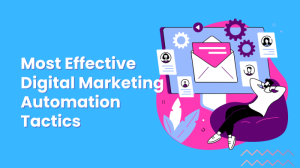
Step right up into the world of paid advertising for e-commerce, where strategies and platforms collide to create a spectacle of success in online selling. Get ready for an enlightening journey through the realm of boosting sales and visibility!
In the following paragraphs, we will delve into the importance of paid advertising, compare different platforms, and learn how to craft effective ad campaigns tailored for e-commerce businesses.
Paid Advertising for E-commerce
Paid advertising plays a crucial role in the success of e-commerce businesses by helping them reach a wider audience, drive targeted traffic, and increase sales. It allows businesses to promote their products or services effectively, generate leads, and boost brand awareness.
Comparison of Different Paid Advertising Platforms for E-commerce
There are several paid advertising platforms suitable for e-commerce businesses, each offering unique features and targeting options. Let’s compare some of the most popular platforms:
- Google Ads: Google Ads is a powerful platform that allows businesses to run search, display, and shopping ads to reach potential customers actively searching for products or services.
- Facebook Ads: Facebook Ads enable businesses to target specific demographics, interests, and behaviors of users on the platform, making it ideal for e-commerce businesses looking to reach a highly targeted audience.
- Instagram Ads: Instagram Ads are visually appealing and can help e-commerce businesses showcase their products to a younger audience, leveraging the platform’s strong visual appeal.
- Amazon Ads: Amazon Ads are perfect for e-commerce businesses selling products on the platform, as they can reach customers who are already in a shopping mindset and looking to make a purchase.
Creating Effective Ad Campaigns for E-commerce
When creating ad campaigns for e-commerce, it’s essential to consider the following key factors:
- Set clear goals: Define your objectives, whether it’s increasing website traffic, boosting sales, or promoting a new product.
- Know your audience: Understand your target audience’s demographics, interests, and behaviors to create relevant and engaging ads.
- Use compelling visuals: Visual content is essential in e-commerce advertising, so make sure to use high-quality images or videos to grab users’ attention.
- Optimize for mobile: With the increasing use of mobile devices for online shopping, ensure your ads are mobile-friendly and provide a seamless user experience.
- Monitor and optimize: Regularly monitor the performance of your ad campaigns, analyze the data, and make adjustments to optimize for better results.
Marketing E-commerce
In the world of e-commerce, marketing plays a crucial role in the success of a business. It involves promoting products or services, attracting customers, and driving sales through various strategies and channels.
Key Marketing Strategies for E-commerce
- Search Engine Optimization (): Optimizing website content to rank higher in search engine results, increasing visibility and organic traffic.
- Pay-Per-Click (PPC) Advertising: Running targeted ads on search engines or social media platforms to reach potential customers based on specific s or demographics.
- Email Marketing: Sending personalized emails to engage with customers, promote products, and drive repeat purchases.
- Social Media Marketing: Leveraging platforms like Facebook, Instagram, and Twitter to connect with audiences, build brand awareness, and drive traffic to the e-commerce site.
- Influencer Marketing: Collaborating with influencers to endorse products or services, reaching their followers and driving conversions.
Successful E-commerce Marketing Campaigns Examples
Amazon Prime Day: Amazon’s annual shopping event offering exclusive deals for Prime members, driving sales and increasing customer loyalty.
Zalando’s Personalized Recommendations: Zalando uses AI algorithms to provide personalized product recommendations to customers, enhancing the shopping experience and increasing conversions.
Warby Parker’s Home Try-On Program: Warby Parker allows customers to try on glasses at home before purchasing, reducing the barrier to online eyewear shopping and boosting sales.
Advertising
Advertising plays a crucial role in the success of an e-commerce business. It helps in reaching a larger audience, increasing brand awareness, and driving sales. There are different types of advertising methods used in e-commerce, each with its own advantages and strategies.
Different Types of Advertising Methods in E-commerce
- Search Engine Marketing (SEM): This involves paid search advertising on search engines like Google, where businesses bid on s to have their ads displayed to relevant users.
- Social Media Advertising: Platforms like Facebook, Instagram, and Twitter offer targeted advertising options to reach specific demographics and interests.
- Display Advertising: Banner ads on websites and mobile apps can help in increasing brand visibility and driving traffic to e-commerce sites.
- Remarketing: This strategy targets users who have previously visited your site but did not make a purchase, reminding them of your products through ads on other websites they visit.
Tips on How to Optimize Advertising Budgets for E-commerce
- Set clear goals: Define your objectives and key performance indicators (KPIs) to measure the success of your advertising campaigns.
- Target the right audience: Use data and analytics to identify your target audience and tailor your ads to their interests and preferences.
- Monitor and optimize: Regularly analyze the performance of your ads, A/B test different creatives and messaging, and adjust your campaigns based on the results.
- Focus on ROI: Allocate your budget to channels and campaigns that deliver the best return on investment (ROI) for your e-commerce business.
Impact of Targeted Advertising on E-commerce Sales
Targeted advertising allows e-commerce businesses to reach the right audience with relevant messaging, increasing the likelihood of conversion and driving sales. By showing ads to users who are already interested in your products or have shown intent to purchase, targeted advertising can significantly impact the success of e-commerce sales and lead to higher conversion rates.
Affiliate Marketing
Affiliate marketing is a popular strategy used in e-commerce where businesses partner with individuals or other companies (affiliates) to promote their products or services. Affiliates earn a commission for each sale or lead generated through their referral link.
Benefits of Affiliate Marketing in E-commerce
- Affiliate marketing allows for a wider reach and increased brand visibility as affiliates promote products to their own audiences.
- Cost-effective marketing strategy as businesses only pay affiliates for actual sales or leads generated.
- Provides an opportunity to tap into niche markets through specialized affiliates.
- Helps in driving traffic to e-commerce websites and increasing conversion rates.
- Builds trust and credibility as affiliates act as third-party endorsements for products or services.
Tips for Building a Successful Affiliate Marketing Program
- Choose the right affiliates who align with your brand values and target audience.
- Provide affiliates with high-quality promotional materials and resources to help them effectively market your products.
- Set clear and transparent commission structures to motivate affiliates and incentivize performance.
- Regularly communicate with affiliates to provide updates, offer support, and address any concerns.
- Track and analyze affiliate performance to optimize strategies and improve ROI.
Branding

Branding is a crucial aspect of e-commerce businesses as it helps create a unique identity and reputation in the market. It involves more than just a logo or color scheme; it encompasses the overall experience and perception of a brand by consumers. A strong brand can differentiate a business from its competitors, build trust with customers, and ultimately drive sales and loyalty.
Importance of Branding for E-commerce Businesses
Branding plays a significant role in establishing credibility and trust with customers in the online marketplace. It helps businesses communicate their values, mission, and story effectively, resonating with their target audience. A well-defined brand strategy can set e-commerce businesses apart from the competition and create a lasting impression on customers.
- Brand recognition: Strong branding helps e-commerce businesses stand out and be easily recognizable among a sea of competitors.
- Customer trust: A consistent and cohesive brand image can build trust with customers, leading to repeat purchases and loyalty.
- Competitive advantage: Effective branding can help e-commerce businesses differentiate themselves and attract customers in a crowded market.
Influence of Branding on Customer Perception and Loyalty
Branding has a direct impact on how customers perceive and interact with e-commerce businesses. A well-established brand can evoke positive emotions, create a sense of belonging, and foster long-term relationships with customers. Consistent branding across all touchpoints can enhance customer loyalty and advocacy.
- Emotional connection: Strong branding can create an emotional connection with customers, leading to increased brand loyalty and advocacy.
- Consistency: Maintaining consistent branding across all channels and interactions helps reinforce brand identity and build trust with customers.
- Customer experience: A well-defined brand can enhance the overall customer experience, driving repeat purchases and word-of-mouth referrals.
Examples of Successful E-commerce Brands and Their Branding Strategies
1. Amazon
Amazon’s branding focuses on convenience, reliability, and a wide selection of products. The logo, website design, and packaging all reflect these values, creating a seamless shopping experience for customers.
2. Nike
Nike’s branding is centered around inspiration, innovation, and athleticism. The iconic swoosh logo, powerful marketing campaigns, and partnerships with athletes reinforce the brand’s image as a leader in sports apparel and footwear.
3. Sephora
Sephora’s branding emphasizes luxury, beauty expertise, and inclusivity. The sleek black and white color scheme, personalized customer service, and exclusive product offerings have positioned Sephora as a go-to destination for beauty enthusiasts.
Direct Marketing
Direct marketing plays a crucial role in e-commerce by allowing businesses to communicate directly with their target audience. This form of marketing involves reaching out to customers through various channels such as email, social media, and targeted ads.
Advantages of Personalized Direct Marketing
Personalized direct marketing offers several advantages for e-commerce businesses. By tailoring messages and offers to individual customers based on their preferences, purchase history, and behavior, businesses can create a more personalized and engaging experience. This can lead to higher conversion rates, increased customer loyalty, and ultimately, higher revenue.
- Improved customer engagement: Personalized messages are more likely to resonate with customers and encourage them to take action.
- Higher conversion rates: By delivering relevant offers to customers, businesses can increase the likelihood of conversions.
- Enhanced customer loyalty: Personalized communication shows customers that businesses understand their needs and preferences, leading to increased loyalty.
- Increased revenue: By effectively implementing personalized direct marketing strategies, businesses can drive sales and revenue growth.
Best Practices for Implementing Direct Marketing Strategies
Implementing direct marketing strategies in e-commerce requires careful planning and execution. Here are some best practices to consider:
- Segment your audience: Divide your customer base into segments based on demographics, behavior, or purchase history to deliver targeted messages.
- Personalize your messages: Use customer data to personalize your emails, ads, and offers to make them more relevant to individual customers.
- Use multiple channels: Reach customers through a variety of channels such as email, social media, and direct mail to maximize your reach and engagement.
- Track and analyze results: Monitor the performance of your direct marketing campaigns and use data analytics to optimize your strategies for better results.
Internet Marketing

In the world of e-commerce, internet marketing plays a crucial role in promoting businesses and driving sales. By utilizing various tools and techniques, e-commerce businesses can effectively reach their target audience and increase their online presence.
Various Internet Marketing Tools and Techniques
- Search Engine Optimization (): involves optimizing your website to rank higher in search engine results pages, making it easier for potential customers to find your products or services online.
- Social Media Marketing: Social media platforms like Facebook, Instagram, and Twitter are powerful tools for reaching a wide audience, engaging with customers, and driving traffic to your e-commerce website.
- Email Marketing: Sending targeted emails to customers and prospects can help increase brand awareness, promote products, and drive sales.
- Content Marketing: Creating valuable and relevant content, such as blog posts, videos, and infographics, can attract and engage customers, ultimately leading to increased sales.
- Pay-Per-Click (PPC) Advertising: PPC ads allow you to reach potential customers through paid placements on search engines and social media platforms, driving traffic to your website and increasing sales.
Role of and Social Media Marketing
- helps improve your website’s visibility in search engine results, making it easier for customers to find your products. Social media marketing, on the other hand, allows you to engage with your audience, build relationships, and drive traffic to your e-commerce site.
- By combining and social media marketing strategies, e-commerce businesses can enhance their online presence, reach a larger audience, and ultimately increase sales.
Leveraging Internet Marketing to Increase E-commerce Sales
- By implementing a comprehensive internet marketing strategy that includes , social media marketing, email marketing, content marketing, and PPC advertising, e-commerce businesses can effectively promote their products and services, attract customers, and drive sales.
- Regularly analyzing and optimizing internet marketing campaigns based on data and customer feedback can help e-commerce businesses continuously improve their strategies and increase sales over time.
Mailing Lists
Mailing lists play a crucial role in e-commerce marketing by allowing businesses to directly reach out to their target audience through email campaigns. They help in building strong relationships with customers, promoting products or services, and driving sales. Here are some tips on how to build and grow an effective e-commerce mailing list:
Building an Effective Mailing List
- Offer incentives such as discounts or exclusive deals in exchange for email sign-ups to entice customers to subscribe to your mailing list.
- Utilize pop-ups or sign-up forms on your website to capture visitor’s email addresses and grow your mailing list.
- Create engaging and valuable content that subscribers will look forward to receiving, such as newsletters, product updates, or special promotions.
- Segment your mailing list based on customer preferences, behavior, or purchase history to send targeted and personalized campaigns.
- Promote your mailing list on social media platforms to attract new subscribers and expand your reach.
Benefits of Email Marketing for E-commerce Businesses
- Cost-effective way to communicate with customers and drive sales without spending a fortune on advertising.
- Build brand loyalty and trust by delivering relevant and timely content directly to subscribers’ inboxes.
- Track and analyze the performance of email campaigns through metrics like open rates, click-through rates, and conversions to optimize future campaigns.
- Reach a wider audience and increase brand awareness by sharing promotions, new products, or company updates through email marketing.
- Drive traffic to your e-commerce website and increase sales by including call-to-action buttons or links in your email campaigns.
Final Summary
As we wrap up this whirlwind tour of paid advertising for e-commerce, remember that the key to success lies in strategic marketing, impactful branding, and leveraging internet tools to maximize sales. Now, go forth and conquer the digital marketplace!
Expert Answers
How can I make my paid advertising stand out in the e-commerce world?
To make your paid advertising stand out, focus on creating eye-catching visuals, targeting the right audience, and constantly testing and optimizing your campaigns for better results.
Which paid advertising platform is best suited for small e-commerce businesses?
For small e-commerce businesses, platforms like Facebook Ads and Google Ads can be cost-effective options with great reach and targeting capabilities.
Is it necessary to invest in paid advertising for a new e-commerce venture?
While not mandatory, investing in paid advertising can significantly boost the visibility and sales of a new e-commerce venture, especially in a competitive market.
How can I measure the success of my paid advertising campaigns for e-commerce?
You can measure the success of your campaigns through metrics like conversion rate, click-through rate, return on ad spend (ROAS), and overall sales generated from the ads.





